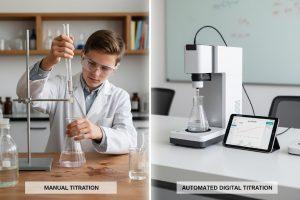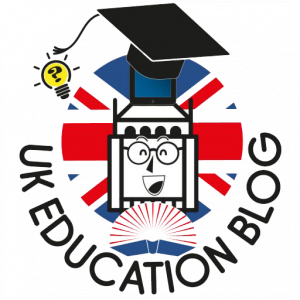Practical experimentation is essential in helping students connect classroom theory with real-world scientific practices.
Textbooks and diagrams provide a foundation of knowledge, but true understanding develops through hands-on activity. Introducing laboratory equipment into education strengthens comprehension of chemical concepts and prepares learners for further study and professional careers.
When classrooms include advanced tools, they become spaces that encourage curiosity, accuracy, and confidence in scientific methods. With the right approach, students gain not only technical skills but also the independence needed to progress in science.
The Role of Titrators in Education

Science education often struggles to bridge the gap between theory and practical application. While students learn chemical principles through diagrams and equations, they often lack access to instruments like titrators, which are essential in industry but rarely found in schools. Modern curricula increasingly emphasise realistic learning experiences, and working with professional-grade equipment gives learners a stronger grasp of concepts.
Titrators allow precise measurement of solution concentrations through controlled chemical reactions, reinforcing knowledge of stoichiometry, acid-base relationships, and analytical accuracy. This practical engagement helps students build confidence while making abstract principles more tangible.
Benefits of Introducing Titration Technology
Bringing laboratory-grade titration systems into schools presents both challenges and opportunities. While manual titration is still common, automated methods reflect how science is carried out in research and industry. This exposure shows students the relevance of science beyond the classroom.
In the UK, A-level Chemistry practical endorsement requires students to demonstrate quantitative techniques directly connected to titrator use. Introducing modern titrator technology allows schools to improve learning outcomes and enhance student confidence. Digital systems also enable multiple experiments within a single lesson, making time in the lab more effective without sacrificing accuracy.
1. Linking Education to Industry Practice
Digital titrators mirror the professional tools used in pharmaceutical and environmental laboratories. This exposure prepares learners for further study or careers in science and technology. Implementation challenges, such as training and compatibility, can usually be addressed through workshops and supplier support.
Students applying stoichiometry and acid-base principles in this way gain valuable insight into how chemical analysis is applied beyond their coursework. They also learn to work with data more effectively, strengthening their scientific and digital literacy.
2. Modern Titrators as Tools for Authentic Science Learning
School laboratories often rely on simplified equipment that differs significantly from professional tools. This creates a gap in readiness for higher education and employment. Automated titrators reduce this gap by replicating the techniques in industries such as food safety, pharmaceuticals, and environmental monitoring.
Students develop important skills such as accurate pipetting, calibration, and data management. When errors occur, they also learn corrective measures such as recalibration, building critical thinking and problem-solving abilities. Exposure to these practices supports strong performance in practical assessments and increases participation in research projects.
3. Digital Titration Technology for School Science Departments
Titration equipment has progressed from manual burettes to automated platforms. Modern titrators provide precise reagent delivery and electronic data recording, enabling students to focus on analysis rather than manual tasks.
Educational models include features such as microlitre precision, automatic data collection, and storage for further study. Many can connect to school IT systems through USB or wireless links, ensuring seamless integration with existing resources. The choice of model should balance curriculum needs, budgets, and staff familiarity, with advanced systems supporting independent projects and detailed investigations.
4. Manual vs Automated Titration in Teaching

Manual titration remains important for teaching fundamentals such as endpoint detection and experimental design. These skills are best developed through direct hands-on activity. However, automated titration provides significant advantages in efficiency, inclusivity, and reliability.
While a manual titration might take an entire lesson, automated systems allow multiple experiments in the same timeframe. Automated titrators also reduce the chance of errors caused by unsteady hands, ensuring accurate results and making experiments more accessible to all students.
5. Bridging Theory and Practice with Digital Data
Digital titrators provide data visualisations such as titration curves, which make concepts like equivalence points and buffer regions more accessible. Real-time analysis strengthens understanding by linking experimental action directly to theory.
The technology also allows students to conduct independent research on complex samples and consumer products, helping them develop problem-solving skills and independence. These projects foster initiative and prepare learners for scientific study at higher levels.
6. Budgeting and Planning for Resources
Introducing titration technology requires schools to plan for ongoing expenses such as reagents, maintenance, and training. Successful implementation depends on recognising the full costs and securing funding where possible.
Grants, educational discounts, and collaborative purchasing agreements can help schools manage costs. Departments may also share resources across subjects to maximise return on investment. Choosing durable and well-supported equipment ensures long-term value for science education.
Introducing titrators into classrooms strengthens knowledge and skills, helping students bridge the divide between theoretical learning and professional practice. When schools adopt this approach, they provide learners with experiences that build confidence and prepare them for future scientific opportunities. Practical learning through titration not only supports curriculum requirements but also allows students to appreciate the relevance of science in everyday life.
Author Profile

- Passionate content creator, contributor, freelance writer and content marketing allrounder.
Latest entries
 learningDecember 17, 2025How to make School Handouts more Accessible for all Learners
learningDecember 17, 2025How to make School Handouts more Accessible for all Learners DictionaryDecember 16, 2025UK Gen Z Christmas Gifting Trends 2025: Expensive Presents or Meaningful Learning Experiences?
DictionaryDecember 16, 2025UK Gen Z Christmas Gifting Trends 2025: Expensive Presents or Meaningful Learning Experiences? learningDecember 15, 2025Why Critical Thinking and Evaluation Skills Matter in Psychology Revision
learningDecember 15, 2025Why Critical Thinking and Evaluation Skills Matter in Psychology Revision learningDecember 3, 2025Common Symptoms of ADHD: What Educators Need to Know
learningDecember 3, 2025Common Symptoms of ADHD: What Educators Need to Know







